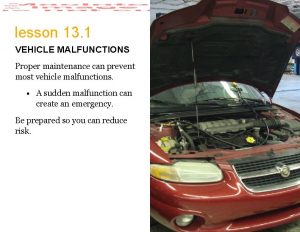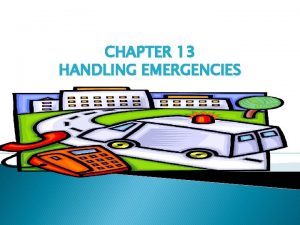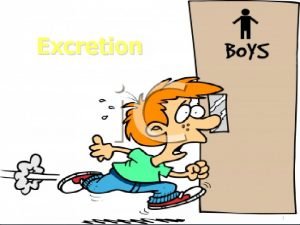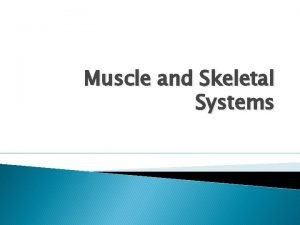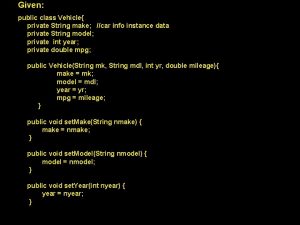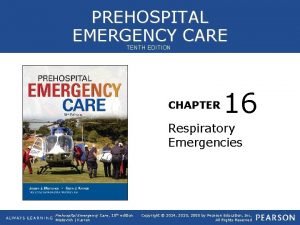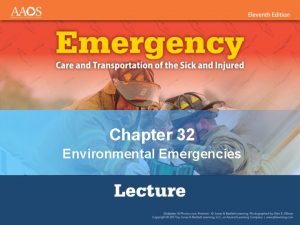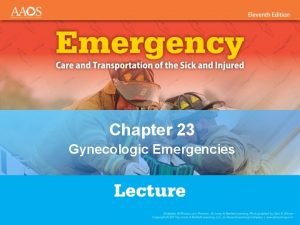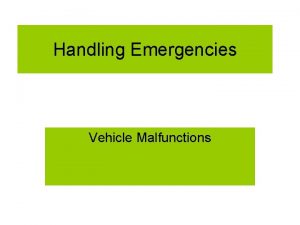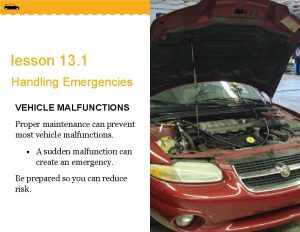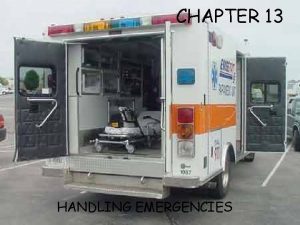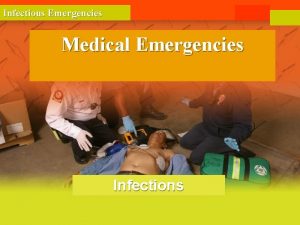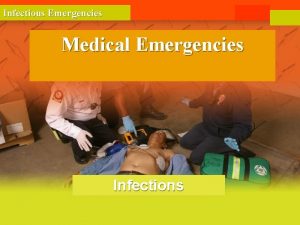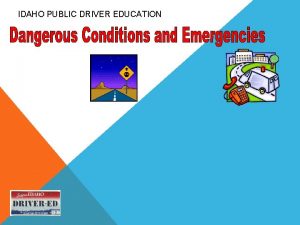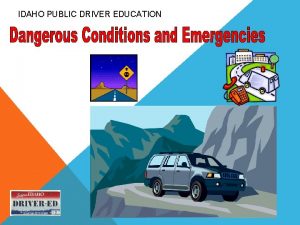CHAPTER 13 HANDLING EMERGENCIES 13 1 VEHICLE MALFUNCTIONS









- Slides: 9

CHAPTER 13 HANDLING EMERGENCIES

13. 1 VEHICLE MALFUNCTIONS OBJECTIVES 1. 2. 3. 4. List actions to take if tire blows out. List proper steps to follow if brakes fail. Explain what to do if your accelerator sticks. Describe what to do in case of steering failure.

THINGS THAT CAN HAPPEN TO YOUR VEHICLE Tire failure Blowout Changing tire Brake failure Total break failure Power break failure Accelerator malfunctions Broken spring Stuck accelerator Engine failure Flooded engine Overheated engine Steering failure Total steering failure Power-steering failure Loss of forward vision Hood flies up Headlights fail Splashed windshield Vehicle on fire Engine compartment fire Vehicle stalls on railroad tracks

13. 2 DRIVING ERRORS OBJECTIVES 1. 2. Describe how to return to the roadway if your vehicle runs off the roadway. Explain when to use an emergency swerve.

BE AWARE OF YOUR SURROUNDINGS DRIVING OFF THE ROAD OFF-ROAD RECOVERY EMGERGENCY SWERVING THE STOP-SWERVE DECISION EXECUTING AN EMERGENCY SWERVE HOW SHARPLY TO SWERVE

13. 3 ROADWAYS HAZARDS OBJECTIVES 1. 2. 3. Describe how to minimize vehicle damage caused by potholes. Explain what to do if you enter a curve too fast. Tell how to escape from a vehicle that is sinking in water.

PAY ATTENTION AT ALL TIMES Potholes in the roadway Sharp curve Object in the roadway Vehicle in deep water

13. 4 COLLISIONS 1. 2. 3. OBJECTIVES Explain how to avoid or minimize headon, side impact, and rear-end collisions. List the immediate steps to take if a collision occurs. Describe other follow-up steps needed after a collision.

LOOK OUT FOR OTHER DRIVERS/CARS WHEN DRIVING Minimizing effects of collision Threat of a head-on collision Threat of a side-impact collision Threat of a rear-end collision If you have a collision � Stop immediately � Aide the injured � Prevent further damage � Send for police � Exchange information Additional steps � Record witnesses’ names and addresses � Give police the facts � File necessary reports

